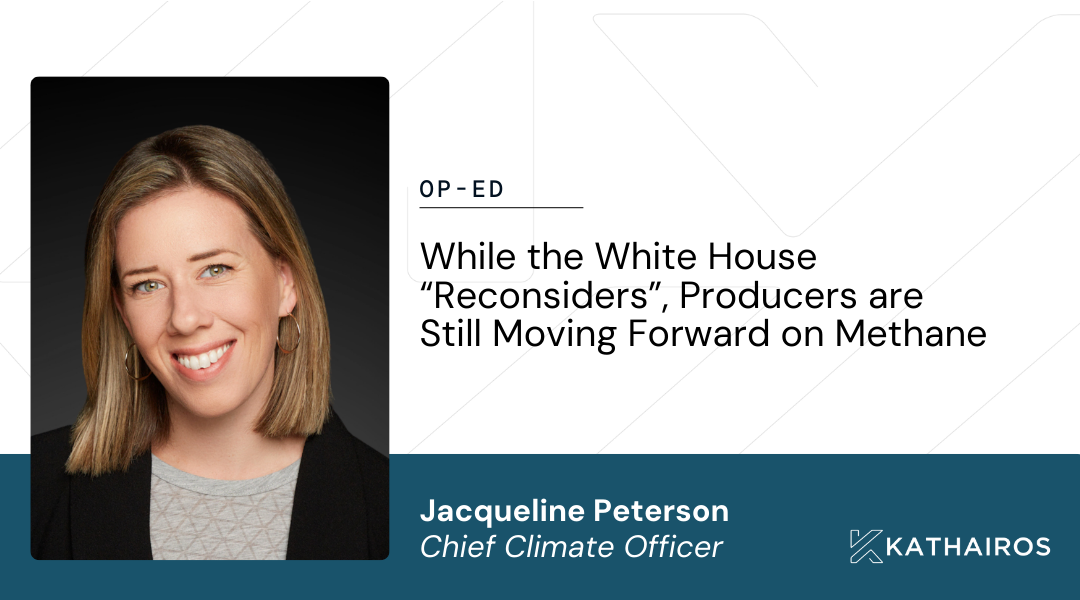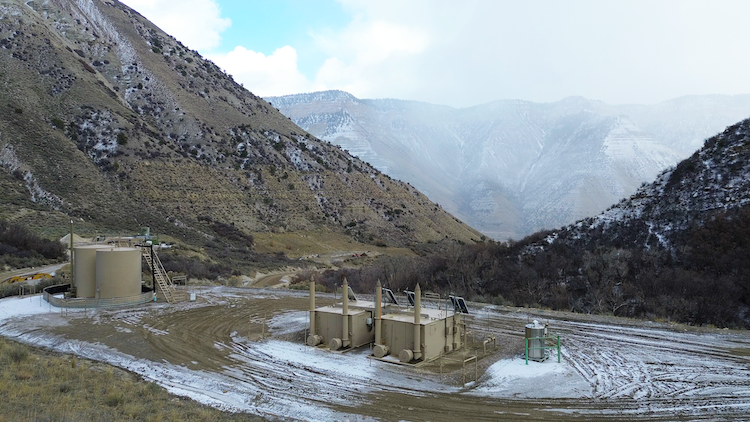
Kathairos has emerged as the leading North American solution for methane elimination from pneumatics, with more than 1,000 systems in operation across North America and over 40 major oil and gas producer partners.
In this post
You’ve actually been lied to about nuclear energy.
When we think nuclear, our immediate thoughts go to times in history when the use of nuclear power was devastating: Hiroshima. Nagasaki. The Chernobyl Incident. Fukushima— the list goes on.
We are taught to fear nuclear energy and constantly reminded of its negatives, whether its health issues from radiation, severe environmental catastrophe from radioactive waste or the threat of nuclear destruction.
But what if this mentality is preventing us from taking advantage of an energy source with immense potential to help in the fight against climate change?
To understand the nuclear dilemma, we have to talk about the origins of nuclear energy: fission.
DISCOVERING NUCLEAR FISSION
In 1938, scientists discovered nuclear fission by slamming an atom of uranium with a neutron, diving the atom into two and releasing a large amount of energy in the process.
On top of this, any given fission reaction can eject up to three more neutrons, which can then trigger further chain reactions with more uranium atoms, resulting in even more energy released.
The United States would go on to use this knowledge to develop the first atomic bomb during World War II, but it wasn’t until 1955 that these same scientific principles were used to create the first nuclear power plant that generated electricity.
THE NUCLEAR ‘PROBLEM’
The 1970’s saw media project the general public’s anxieties about the Cold War and nuclear destruction onto nuclear power plants, which by then were appearing all over the world as a potential new energy source.
For instance, the 1979 Hollywood thriller The China Syndrome about a fictional nuclear reactor meltdown just so happened to be released less than a month before an actual partial nuclear reactor meltdown at Three Mile Island in Pennsylvania.
This coincidence helped foster what would end up becoming a mainstream negative connotation with nuclear energy: from 1979 to 1988, 67 planned nuclear reactor plants were canceled in the United States alone.
In 1986, the Chernobyl incident happened due to human error, resulting in an explosion that blanketed Europe in a nuclear cloud. We are even still dealing with fallout from the Fukushima disaster in 2011, which begs the question: should we be afraid of nuclear energy?
LOOKING AT THE NUMBERS
Only 0.005% of the average individual’s yearly radiation dose comes from nuclear power. Let’s put this into perspective: this is 200x less than the radiation you would get from taking a flight, 100x less than the radiation associated with coal use and about the same amount of radiation as eating a single banana per year.
If we dig a little deeper into the incidents noted above, the partial meltdown at Three Mile Island did not actually result in any deaths, and most epidemiological studies found that the incident had no detectable health consequences.
While long-term effects of Chernobyl are still widely debated, only 51 people died directly as a result of the incident. Scientific studies have also found few health risks connected to radiation exposure following the Fukushima disaster.
The World Health Organization explains that it’s safer to work in a nuclear power plant than in an urban city office, as urban air pollution of ozone, sulfur dioxide, carbon monoxide and nitrogen dioxide causes 7 million deaths per year.
Surprising? Here’s more.
A single CT scan of the abdomen involves about 10x the radiation exposure that the average nuclear worker gets in a year. Just by living in an urban centre increases your mortality rate by 2.8x that of a Chernobyl cleanup worker.
So what is the real story here: is nuclear energy dangerous, or is it safe?
GETTING TO THE CORE OF IT ALL
Nuclear reactors use low enriched uranium and controlled chain reactions to heat pressurized water that then heats water in a secondary circuit.
This process causes steam to rotate a turbine, which is linked to a generator that creates electricity. Cool water from a nearby river or ocean be pumped in to cool water in the secondary circuit, or cooling towers can be built alongside reactors.
Newer reactors, known as pebble-bed reactors, are designed in a way such that the nuclear chain reaction cannot escalate and cause a meltdown, even in the event of a complete failure of reactor machinery.
The advent of these newer technologies alongside careful selection of power plant sites means that nuclear accidents, like the one that occurred in Fukushima in 2011, are actually not possible.
But what about nuclear waste?
BENEATH THE SURFACE: NUCLEAR WASTE DISPOSAL
97% of waste generated from nuclear power plants is classified as either low- or intermediate-level waste. This waste is encapsulated in specifically-engineered casks in stable form, and placed at depths well below the biosphere.
These long-term geological storage solutions ensure that there is zero radioactive movement for thousands of years to come.
What does this mean? Well, in the case of a particularly strong earthquake or other natural disaster, deep-surface repositories will help prevent the waste from releasing radiation to the surface.
The removal of nuclear waste and its storage deep beneath the ground certainly is a much better alternative than releasing greenhouse gases into the atmosphere, which results from the burning of fossil fuels and contributes to the current climate crisis we are facing today.
THE FUTURE OF NUCLEAR
Nuclear energy represents a viable way of achieving a low-carbon future: the United States gets 20% of its electricity from nuclear, while France gets 70% of its electricity.
MIT conducted an analysis of 1,000 potential scenarios to achieve a zero-carbon future and all of the cheapest paths involved nuclear energy used in conjunction with forms of renewable energy.
This represents a very viable way for countries vast with natural resources, like the United States and Canada, to move towards a low-carbon future by using nuclear energy to supplement renewable sources of energy, like solar and wind.
Many other countries, however, do not have the ability to rely on renewable energy. This is the reason why the United Kingdom, for instance, has put nuclear energy front and centre for how it will achieve zero carbon emissions, because they do not have the capacity to rely on solar and wind in the same way.
One thing is certain: the fear of nuclear energy is getting in the way of its potential in working with renewable forms of energy to achieve a decarbonized future.
Explore more posts from Kathairos
.jpg)
Decarb Digest, Issue 01: Discover Why Energy Leaders Aren’t Waiting on Washington

Op-Ed: While the White House “reconsiders”, producers are still moving forward on methane

